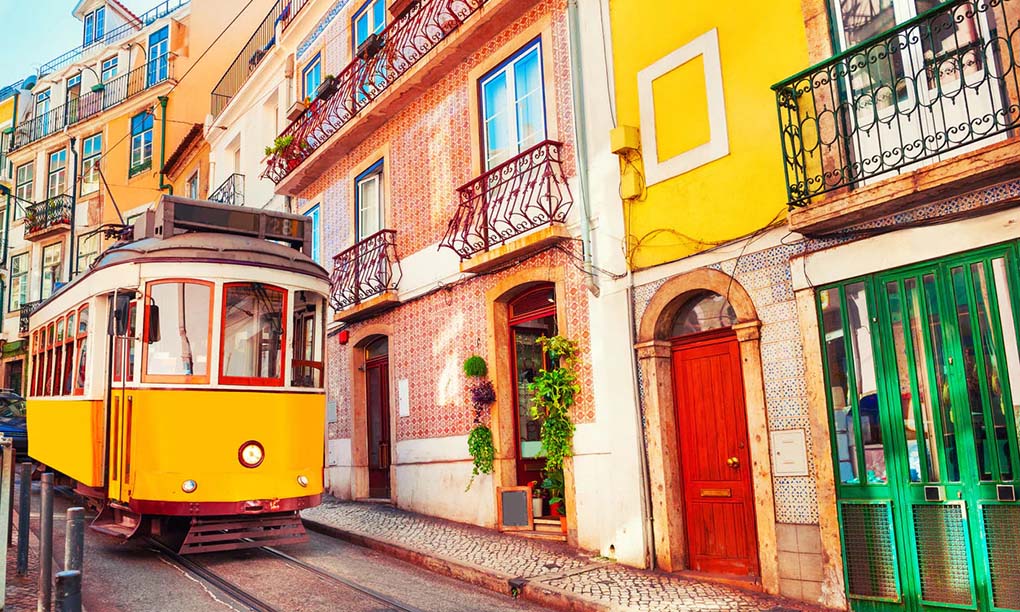Lisbon, the capital of Portugal, is a city rich in history, vibrant in culture, and diverse in its offerings. From its iconic yellow trams to the melancholic strains of Fado music, Lisbon is a city that blends the old with the new in a captivating dance. In this blog, I’ll share my experience in Lisbon with you, detailing the city’s transport options, cultural highlights, culinary delights, and my personal experiences.
Arrival and First Impressions
Arriving in Lisbon was a smooth and pleasant experience. I landed at Humberto Delgado Airport, which is conveniently located just 7 kilometers from the city center. The airport is well-connected to major European and international destinations, making it a bustling gateway to Portugal. After a quick and efficient customs check, I made my way to the arrivals hall, where I had a few transportation options to reach the city center.
Airport to City Center: Navigating Lisbon’s Transport Network
One of the most convenient and cost-effective ways to get from the airport to the city center is by using the metro. The airport is connected to the red line (Linha Vermelha), which runs through several major transfer stations. I purchased a Viva Viagem card from one of the machines at the station. The card costs €0.50 and can be loaded with money to use on various forms of public transport. I opted for the zapping option, which allows for pay-as-you-go usage. A single metro ride costs around €1.50, making it an economical choice for travelers. The metro is clean, efficient, and runs from 6:30 AM to 1:00 AM, making it a reliable option for most travel needs.
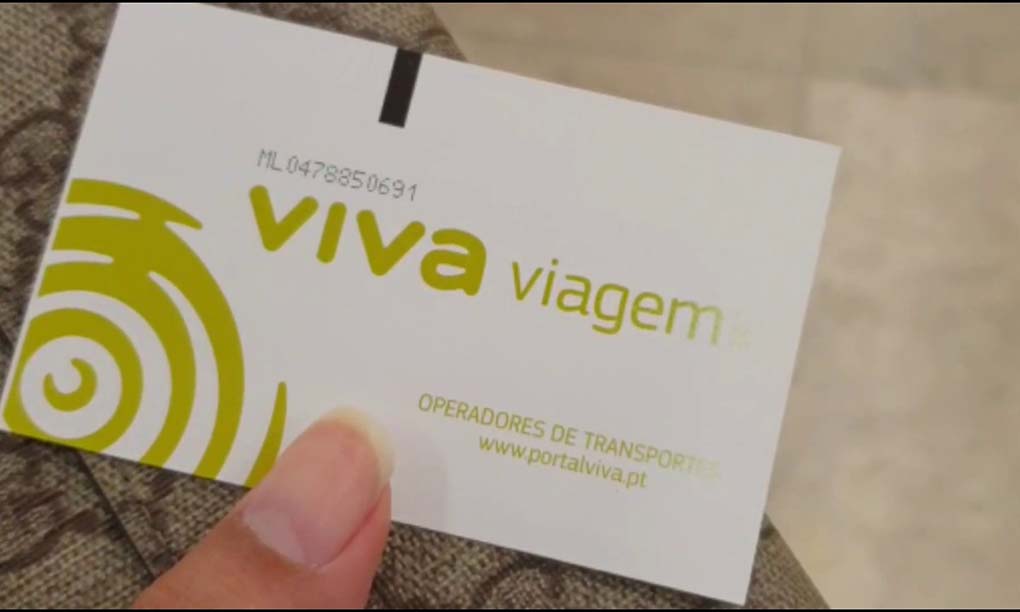
Another popular option is the Aerobus, a dedicated shuttle service that runs between the airport and various points in the city. It’s slightly more expensive, at around €4.00 for a one-way ticket, but it offers more convenience if you have heavy luggage or prefer a direct route to your hotel. The bus is comfortable and provides free Wi-Fi, which is a nice perk after a long flight.
For those who prefer private transport, taxis and ride-hailing services like Uber are readily available. A taxi ride to the city center costs between €15 and €20, depending on traffic. I opted for an Uber, which cost me around €17, and provided a quick and comfortable ride directly to my hotel.
Exploring Lisbon: Public Transport and Navigational Tips
Once settled in, I set out to explore the city. Lisbon’s public transport system is extensive and easy to navigate, comprising buses, trams, metro, and ferries. The Viva Viagem card I purchased at the airport proved invaluable, as it can be used across all these modes of transport.
Trams: A Ride Through History
One of Lisbon’s most iconic symbols is its historic tram system, particularly the famous Tram 28. These vintage yellow trams wind through the narrow, hilly streets of the city, offering a scenic and nostalgic ride. The tram route passes through some of Lisbon’s most picturesque neighborhoods, including Alfama, Baixa, and Graça. Riding Tram 28 is like stepping back in time, as the wooden interiors and vintage fittings transport you to a bygone era. The cost of a single tram ride is €3.00 if purchased onboard, but it’s cheaper if you use your Viva Viagem card, costing only €1.50.
Another noteworthy tram is Tram 15, which runs from the city center to Belém. This modern tram takes you on a journey along the river, passing iconic sights like the Jerónimos Monastery and the Belém Tower. It’s an excellent way to explore the historical and cultural treasures of Belém, especially if you’re short on time.
Buses and Metro: Efficient and Convenient
Lisbon’s bus network is extensive, covering areas that the metro and trams do not reach. Buses are a convenient way to get around, especially if you’re exploring neighborhoods like Parque das Nações or the LX Factory area. The buses are modern and air-conditioned, offering a comfortable ride. A single bus journey costs the same as a tram or metro ride, at €1.50 with a Viva Viagem card.
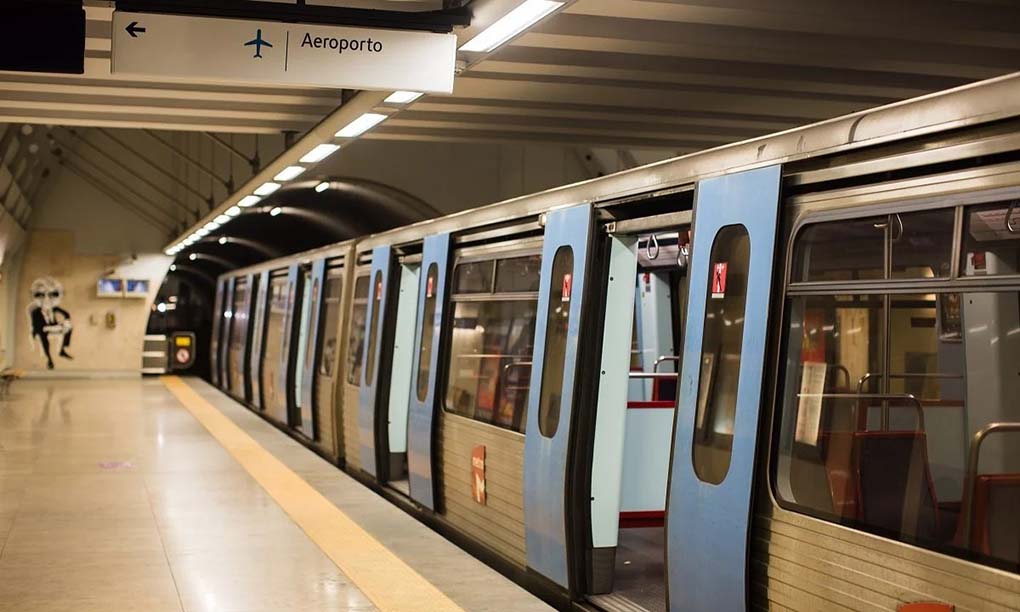
The metro system, while not as scenic as the trams, is the quickest way to get around the city. It consists of four lines: blue, yellow, green, and red. The stations are well-signposted, and trains are frequent, running every 5-10 minutes. The metro is particularly useful for reaching destinations like the modern Parque das Nações area, the business district, and the suburban areas.
Ferries: Crossing the Tagus River
Lisbon’s location on the Tagus River makes ferry transport an integral part of the city’s transit system. The ferries are a scenic and pleasant way to cross the river, offering stunning views of the city’s skyline. The Cacilhas ferry is one of the most popular routes, connecting the Cais do Sodré station with Cacilhas on the southern bank. From Cacilhas, you can easily access the Cristo Rei statue, which offers panoramic views of Lisbon. A single ferry ride costs around €1.30 with the Viva Viagem card.
Cultural Exploration: History, Art, and Music
Lisbon’s rich cultural tapestry is woven from its long history, diverse influences, and vibrant artistic scene. As I wandered through the city, I was continually amazed by the blend of old and new, traditional and contemporary.
Historic Neighborhoods: Alfama and Bairro Alto
Alfama, Lisbon’s oldest district, is a maze of narrow, winding streets, steep staircases, and colorful houses. This neighborhood is a treasure trove of history, with its origins dating back to the Moors. Walking through Alfama felt like stepping into a living museum, with each alley revealing a new story. The São Jorge Castle, perched on a hill, offers stunning views of the city and the river. The castle grounds are perfect for a leisurely stroll, and the museum inside provides fascinating insights into Lisbon’s history.
Bairro Alto, in contrast, is the heartbeat of Lisbon’s nightlife. By day, it’s a quiet neighborhood with quaint shops and cafes. But as night falls, the area transforms into a lively hub of bars, restaurants, and clubs. The narrow streets come alive with music, laughter, and the clinking of glasses. One evening, I joined locals and tourists alike at a traditional Fado house, where I experienced the soulful and haunting music that tells the stories of Lisbon’s past and present.
Belém: A Journey Through Portugal’s Golden Age
No visit to Lisbon is complete without a trip to Belém, a district that celebrates Portugal’s Age of Discoveries. The Jerónimos Monastery and the Belém Tower are UNESCO World Heritage Sites and are must-see attractions. The monastery’s intricate Manueline architecture is a testament to the wealth and artistic talent of the time. Inside, the tomb of Vasco da Gama, the famous explorer, serves as a reminder of Portugal’s maritime history.
Just a short walk away is the Monument to the Discoveries, a striking structure that pays homage to the explorers who set sail from Portugal’s shores. Climbing to the top offers panoramic views of the river and the surrounding area.
A visit to Belém wouldn’t be complete without tasting the famous Pastéis de Belém. This iconic pastry shop has been serving these delicious custard tarts since 1837. The combination of the crispy pastry and creamy custard filling was an unforgettable culinary experience.
Culinary Adventures: A Taste of Lisbon
Lisbon’s culinary scene is a delightful blend of traditional Portuguese flavors and modern gastronomy. From seafood dishes to delectable pastries, the city offers a culinary journey that is both diverse and delicious.
Traditional Dishes: Bacalhau and Sardines
Portugal is famous for its seafood, and Lisbon offers some of the best dishes I’ve ever tasted. Bacalhau (salted cod) is a staple in Portuguese cuisine, and there are said to be 365 different ways to prepare it. One evening, I dined at a local restaurant in Alfama, where I enjoyed Bacalhau à Brás. This dish, made with shredded cod, onions, potatoes, and eggs, was rich and flavorful. Another classic dish I tried was Sardinhas Assadas, grilled sardines, which are especially popular during the Santo António festival in June.
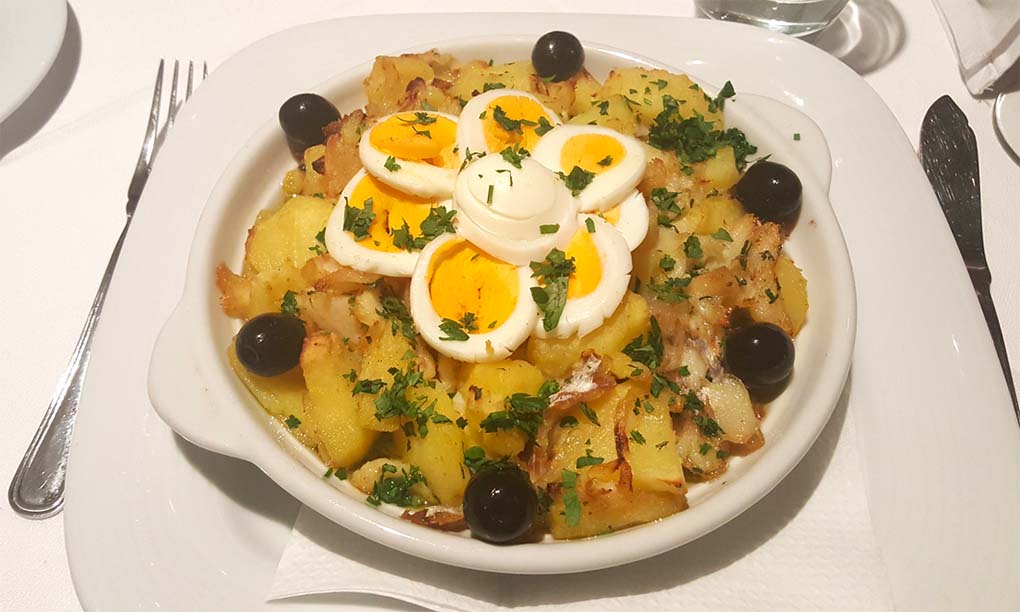
Modern Gastronomy: Fusion and Innovation
Lisbon’s food scene is not limited to traditional dishes. The city has a growing reputation for modern gastronomy, with chefs experimenting with fusion cuisine and innovative techniques. At the Time Out Market, a food hall located in the Mercado da Ribeira, I explored a variety of dishes from renowned chefs. From gourmet burgers to sushi with a Portuguese twist, the market offers a little something for everyone.
Sweet Treats: Pastéis de Nata and More
No trip to Lisbon would be complete without indulging in Pastéis de Nata, the city’s famous custard tarts. While the Pastéis de Belém is the most famous, you can find these delicious pastries all over the city. I particularly enjoyed sampling different versions from various bakeries, each with its own unique twist. Another sweet treat I discovered was Travesseiros, puff pastries filled with almond cream, which I found at the historic pastry shop Casa dos Ovos Moles.
Modern Lisbon: Shopping, Art, and Innovation
Lisbon is not just about history and tradition; it’s also a city that embraces modernity and innovation. The city’s shopping districts, contemporary art galleries, and innovative projects showcase a dynamic and forward-thinking spirit.
Shopping: From Traditional to Trendy
Lisbon offers a diverse shopping experience, from traditional markets to high-end boutiques. In the Baixa district, Rua Augusta and its surrounding streets are home to a mix of international brands and local shops. For a more unique shopping experience, I visited the LX Factory, a creative hub located in a former industrial complex. This trendy area is filled with boutiques, art studios, cafes, and restaurants. It’s the perfect place to find one-of-a-kind items, from handmade jewelry to vintage clothing.
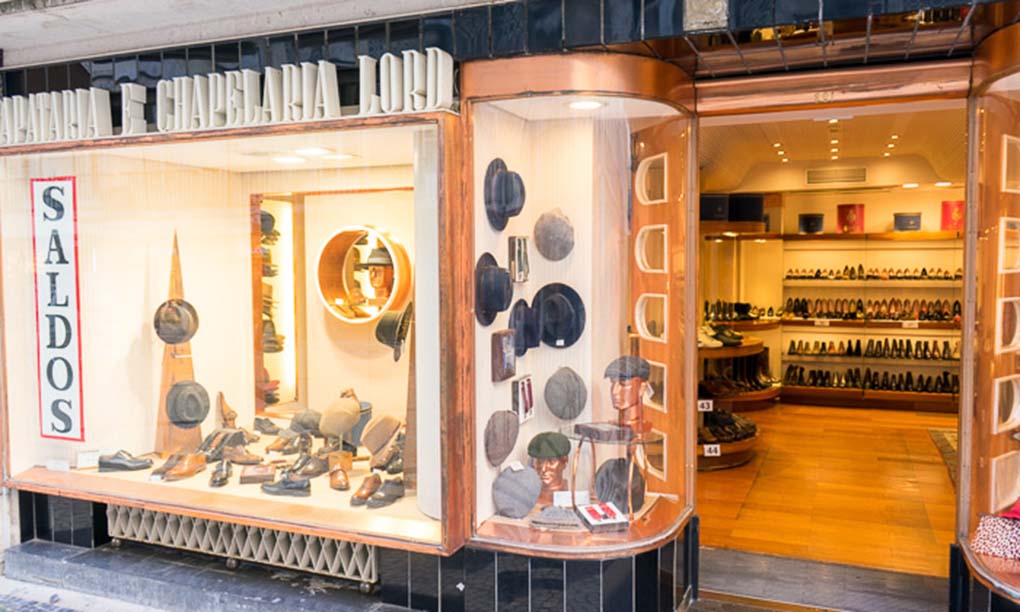
Contemporary Art: A New Perspective
Lisbon’s art scene is vibrant and diverse, with a growing number of galleries and museums showcasing contemporary art. One of the highlights of my trip was visiting the MAAT (Museum of Art, Architecture, and Technology). This stunning museum, located along the riverfront, features cutting-edge exhibitions and a beautiful rooftop with panoramic views of the city. Another notable gallery is the Berardo Collection Museum, which houses an impressive collection of modern and contemporary art, including works by Picasso, Dalí, and Warhol.
Innovation and Sustainability: The Future of Lisbon
Lisbon is also making strides in innovation and sustainability. The city has embraced green initiatives, such as bike-sharing programs and eco-friendly public transport options. I noticed many locals using electric scooters and bicycles, which are available for rent through various apps. The city’s efforts to promote sustainable living are also evident in projects like the Park of Nations (Parque das Nações), a modern district built for the 1998 World Expo. This area features green spaces, futuristic architecture, and attractions like the Oceanarium, one of the largest aquariums in Europe.
A Day Trip to Sintra: Fairy-Tale Palaces and Lush Landscapes
While Lisbon has more than enough to keep any traveler busy, I highly recommend taking a day trip to Sintra, a magical town just 30 kilometers from the city. Known for its stunning palaces, lush gardens, and mystical atmosphere, Sintra is a UNESCO World Heritage Site and a must-visit destination.
I took a train from Rossio Station, a beautiful 19th-century building in the heart of Lisbon. The train ride to Sintra takes about 40 minutes and costs around €2.30 one way with the Viva Viagem card. Upon arrival, I was greeted by the sight of the colorful Pena Palace perched on a hilltop. This 19th-century Romanticist palace is a kaleidoscope of colors and styles, with its vibrant facades and intricate tile work. The surrounding gardens are equally enchanting, with winding paths, exotic plants, and stunning viewpoints.
Another highlight of Sintra is the Quinta da Regaleira, a Gothic-style mansion surrounded by mysterious gardens filled with hidden tunnels, grottoes, and sculptures. The property’s most famous feature is the Initiation Well, a spiral staircase that descends into the depths of the earth. Exploring this fantastical estate was like stepping into a fairy tale.
For lunch, I stopped at a local cafe and enjoyed a traditional Portuguese dish called Frango à Piri-Piri (spicy grilled chicken), followed by a Sintra specialty, Queijadas (sweet cheese tarts). Afterward, I visited the Moorish Castle, an ancient fortress with panoramic views of the surrounding hills and the Atlantic Ocean.
My time in Lisbon was a whirlwind of discovery, filled with rich history, vibrant culture, delicious food, and warm hospitality. From the charming trams that clatter through the city streets to the soulful melodies of Fado, Lisbon captivated my heart with its unique blend of tradition and modernity.
One of the things I appreciated most about Lisbon was its welcoming and friendly atmosphere. The locals, known as “Lisboetas,” are proud of their city and eager to share its stories and secrets with visitors. Whether I was asking for directions, enjoying a meal at a local restaurant, or exploring the city’s attractions, I felt a genuine warmth and hospitality that made me feel at home.
Whether you’re a history buff, a foodie, an art lover, or an adventurer, Lisbon has something to offer. It’s a city that invites you to explore, to indulge, and to immerse yourself in its unique charm.
Tags: A Taste of Lisbon, Public Transportation in Lisbon, Tips for Exploring Lisbon